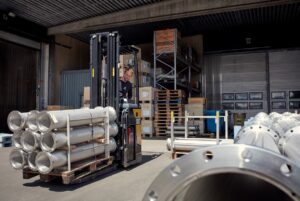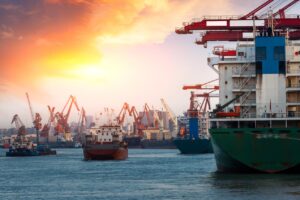Ahead of discussion on lifecycle analysis guidelines for marine fuels, a report highlights that the emissions benefits of alternative fuels are only possible under the cleanest well-to-wake conditions.
When the IMO Marine Environment Protection Committee meets in July, it will aim to finalise lifecycle analysis guidelines that will dictate how fuels are accounted for under future emissions regulation. A report from climate technology innovator Daphne Technology shows that the emissions benefits of alternative fuels cannot be taken for granted.
The literature review presents separate well-to-tank, tank-to-wake and well-to-wake emissions factors for all greenhouse gases across several fuels, using both twenty- and hundred-year global warming potential impacts to calculate carbon dioxide equivalents (CO2e).
The need to use whole lifecycle emissions in the CII and future measures is made very clear. Tank-to-wake emissions for ammonia and methanol are higher than those of heavy fuel oil or marine gas oil. For methanol, “higher CO2 and CH4 [methane] emissions nullify any CO2e reduction potential”. Although ammonia used with 5% diesel pilot fuel offers a CO2 reduction of 80% compared to HFO and MGO, high N2O emissions means that total CO2e emissions are higher.

Ammonia is often described as a carbon-free fuel, but the emissions involved in its supply chain and the production of N2O lead the authors to some interesting findings. On a well-to-wake basis, if ammonia is produced from a renewable source, the use of ammonia can reduce GHG emissions by 71% if N2O emissions are completely removed. Otherwise GHG emissions on a well-to-wake basis are increase by 13.1%.
As well as the ensuring that alternative fuels are produced and used in a way that minimises lifecycle emissions, operators also face high engine costs. The report cites figures from DTU’s MarE-fuel study, published in 2021. LNG’s retrofit cost of $26.5 million compares to a less costly retrofit for a methanol operation at $15 million, while LPG and ammonia have retrofit costs of $18.5 million and $20 million respectively.
The authors conclude: “Equally as important to considering these LCA emissions is the barriers to overcome implementing them across the worldwide fleet: technical maturity, tank capacity and bunkering infrastructure are some of the key hurdles to overcome to realize a net-zero shipping future.”
Related stories


ABS, ECOLOG, Hanwha Ocean and Babcock sign pioneering LCO2 carrier study

Svanehøj secures CO2 pump order for the third Northern Lights LCO2 carrier




































